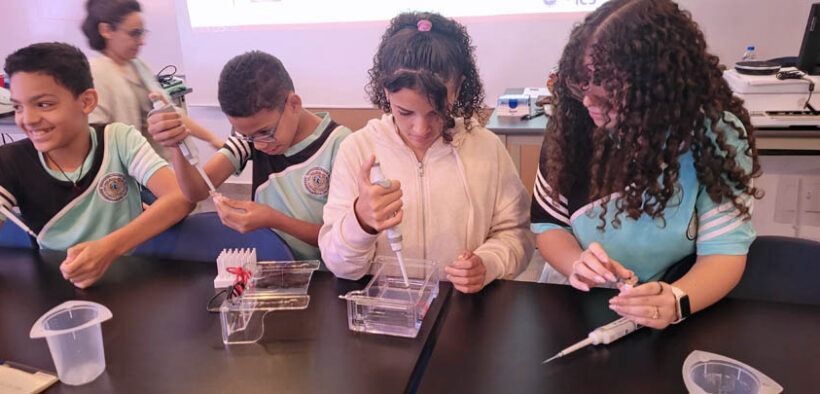Arecibo Observatory enters new era as STEM education hub

The iconic Arecibo Observatory, once celebrated for its astronomical discoveries before the collapse of its massive radio telescope in 2020, is being transformed into a new center for science, technology, engineering and mathematics (STEM) education and innovation.
The NSF Arecibo Center for STEM Education, Computational Skills and Community Engagement — known as Arecibo C3 (AC3) — marks the next chapter in the site’s evolution, aiming to position Puerto Rico as a regional leader in STEM learning and research.
Led by the University of Puerto Rico, Río Piedras; the University of Maryland, Baltimore County; and Cold Spring Harbor Laboratory in New York, the project is funded by the U.S. National Science Foundation.
The initiative seeks to strengthen Puerto Rico’s STEM ecosystem by integrating education, workforce development and community partnerships that promote inclusion and sustainability in science and technology.
In summer 2024, Arecibo C3 launched its pilot phase, introducing programs to gather community feedback and co-design new educational opportunities.
Over the past year, hundreds of students, teachers and researchers have participated in workshops, field trips and collaborative projects in molecular biology, genetics, computing and digital skills development.
These activities provided hands-on experiences with professional lab equipment and helped participants gain confidence and practical knowledge in biology, computing and technology.
“Now, AC3 announces its January soft opening, where it will begin the offering of ticketed weekly events, including historical tours highlighting Arecibo’s legacy of scientific discovery and explorations of the region’s biodiversity,” said Jason Williams, assistant director at Cold Spring Harbor Laboratory’s DNA Learning Center and AC3 project lead.
“Visitors will enjoy hands-on STEM experiences in biology, computing, astronomy, and more,” he said.
Williams added that guests will also preview “Signals,” a major exhibition opening in early 2026 that will connect the observatory’s historic role in global science with a new generation of Puerto Rican scientists shaping the island’s STEM future.
“This center makes Puerto Rico a regional hub for STEM innovation through three key pillars: education research with global impact, workforce development for a STEM-based economy, and partnerships that address community challenges,” said José Agosto-Rivera, associate professor at the University of Puerto Rico, Río Piedras, and principal investigator of the project.
“We want scientific knowledge to benefit Puerto Rico directly,” he added.
The pilot programs have included early-STEM education research using multisensory learning, molecular biology and genomics training for educators, digital skills workshops for parents, and human-centered computing courses for students and faculty. Each effort seeks to connect academic research with real-world applications in Puerto Rican communities.
“With the rapid growth of AI, it’s more important than ever to integrate computational thinking across all realms of education,” said Patricia Ordóñez, associate professor and principal investigator at University of Maryland. “We’re engaging nontraditional participants to co-create community computing learning ecosystems through participatory design.”
AC3’s programming also emphasizes community engagement, said Yasmin Santiago, the center’s programming and operations director.
“Through these experiences, participants build self-efficacy in biology, technology, computing and more,” she said.
By transforming the historic Arecibo Observatory into a center for education and innovation, AC3 seeks to prepare Puerto Rico’s next generation of scientists and engineers to use research and technology to solve local challenges while contributing to the global STEM community, officials said.




